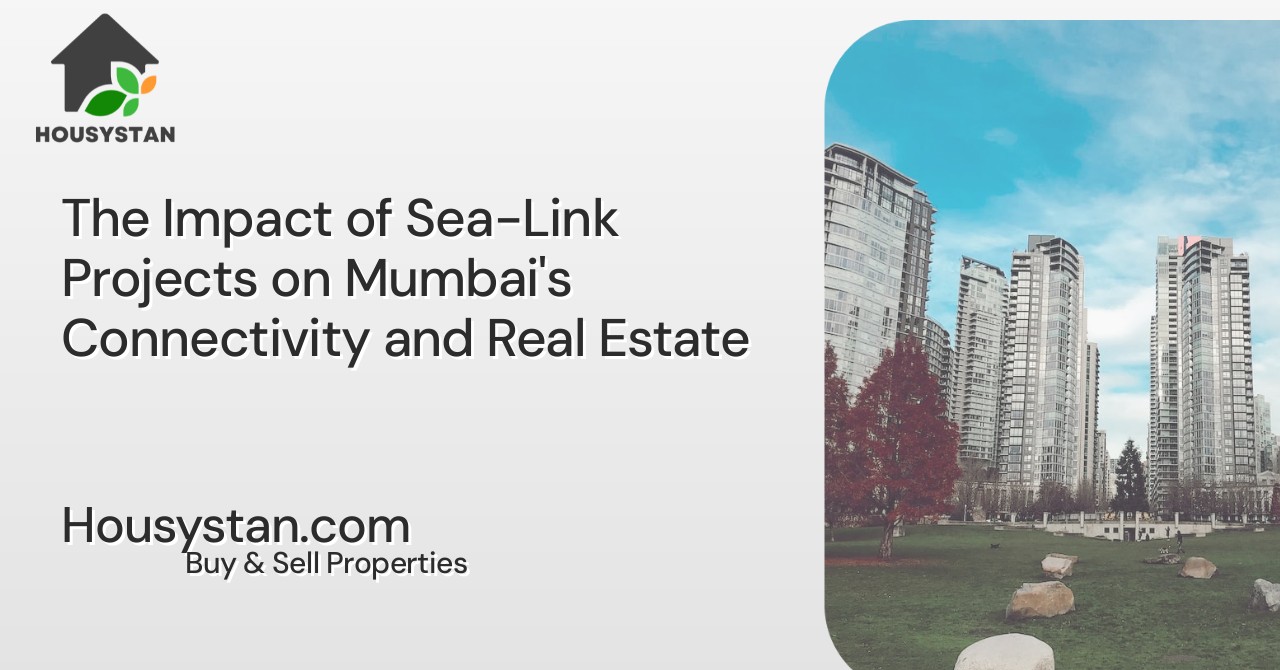The Impact of Sea-Link Projects on Mumbai's Connectivity and Real Estate
Read latest blogs and articles from Housystan

The Information mentioned here was last updated on:
27/11/2025The Impact of Sea-Link Projects on Mumbai's Connectivity and Real Estate
Mumbai, often called the financial capital of India, is a bustling metropolis that grapples with its distinct challenges of connectivity and urban planning. In this sea of skyscrapers and narrow lanes, mega infrastructure projects like sea links promise to transform the city's mobility landscape. The continuous influx of sea-link projects in Mumbai not only alters the urban skyline but also boosts the real estate sector, offering new opportunities and insights into the city's development dynamics. Let’s dive into how these sea-link projects are shaping Mumbai's connectivity and real estate markets.
Enhanced Connectivity: The Backbone of Urban Growth
- Verified Tenants/Buyers
- Unlimited Property Listing
- Zero subscription/charges fee
To understand the impact of sea-link projects, we must first appreciate their role in improving connectivity. These projects are bridges constructed over water bodies to connect different parts of the city, relieving pressure on traditional land routes.
1. Reduction in Commute Time:
- Sea links provide a direct path between various suburbs and the city center, significantly cutting down on commute times.
- For instance, the Bandra-Worli Sea Link has reduced travel time from over an hour to just a few minutes, helping commuters save precious time daily.
2. Alleviation of Road Traffic:
- By providing alternative routes, sea links help divert traffic from congested city roads.
- This not only improves road safety but also decreases the stress and pollution associated with heavy traffic.
3. Seamless Regional Connectivity:
- Future projects like the Mumbai Trans Harbour Link will create a seamless link between Mumbai and Navi Mumbai, expanding the accessibility of the greater metropolitan area.
Real Estate Boom: Tapping into New Potential
With improved connectivity, the real estate market in Mumbai stands on the brink of substantial growth. Sea-link projects are a game-changer, directly impacting property values and development patterns.
1. Rise in Property Values:
- Areas connected by sea links often experience a surge in real estate prices due to increased demand.
- Proximity to these projects provides a new level of desirability, attracting both homebuyers and commercial investors.
2. Development of New Areas:
- Previously undervalued or inaccessible regions become hotbeds for development once a sea link is completed.
- Developers often capitalize on this by launching new residential and commercial projects, catering to the heightened demand.
3. Shift towards Waterfront Development:
- The aesthetic and lifestyle appeal of waterfront properties increases, leading to luxury projects that make the most of sea views.
- Such projects often come with premium pricing, further boosting the real estate market.
Challenges and Considerations
While sea-link projects offer numerous benefits, they also present unique challenges that need careful consideration.
1. Environmental Concerns:
- Constructing sea links can have a significant environmental impact, affecting marine life and coastal ecosystems.
- Projects must be designed with sustainability in mind, ensuring minimal ecological disruption.
2. Socio-Economic Impacts:
- As property prices rise, the affordability of housing can become an issue.
- It’s crucial to ensure that development remains inclusive, providing options for various income groups.
3. Infrastructure Strain:
- The influx of residents and businesses to newly connected areas can strain existing infrastructure, such as public transportation and utilities.
- Comprehensive urban planning is necessary to support the increased demand and maintain quality of life.
Future Outlook: What Lies Ahead?
As Mumbai continues to expand and develop, sea-link projects will be a pivotal part of its infrastructure strategy. Their successful integration could serve as a model for other coastal cities facing similar challenges.
1. Innovative Design and Technology:
- Future projects could incorporate advanced engineering techniques and smart technologies to enhance safety, efficiency, and sustainability.
- Adoption of technology can facilitate real-time monitoring and maintenance, prolonging the lifespan of these infrastructures.
2. Increased Government Collaboration:
- Effective collaboration between government entities, private developers, and environmental bodies will be crucial.
- Policies promoting sustainable development and facilitating ease of business will encourage further investment and innovation in infrastructure.
3. Community Involvement:
- Engaging local communities in planning and decision-making can help ensure that development benefits everyone.
- Awareness programs and consultations can address potential concerns, fostering a supportive environment for growth.
Key Takeaways: Navigating Mumbai's Urban Evolution
The development of sea-link projects in Mumbai is not merely an infrastructural upgrade but a multifaceted transformation of the cityscape. By enhancing connectivity, these projects catalyze real estate development and economic growth, heralding a new era for Mumbai.
- Improved Accessibility: Commuters gain faster and more efficient travel options, enhancing quality of life.
- Real Estate Opportunities: Developers and investors find new avenues for growth, spurring a wave of construction and innovation.
- Balanced Development: Addressing environmental and socio-economic challenges will ensure sustainable expansion that uplifts the whole city.
From reducing commute times to sparking real estate booms, sea-link projects have a far-reaching impact on Mumbai's development. As the city continues on its path of modernization, these projects will remain a cornerstone of its evolving identity, serving as symbols of progress and potential.